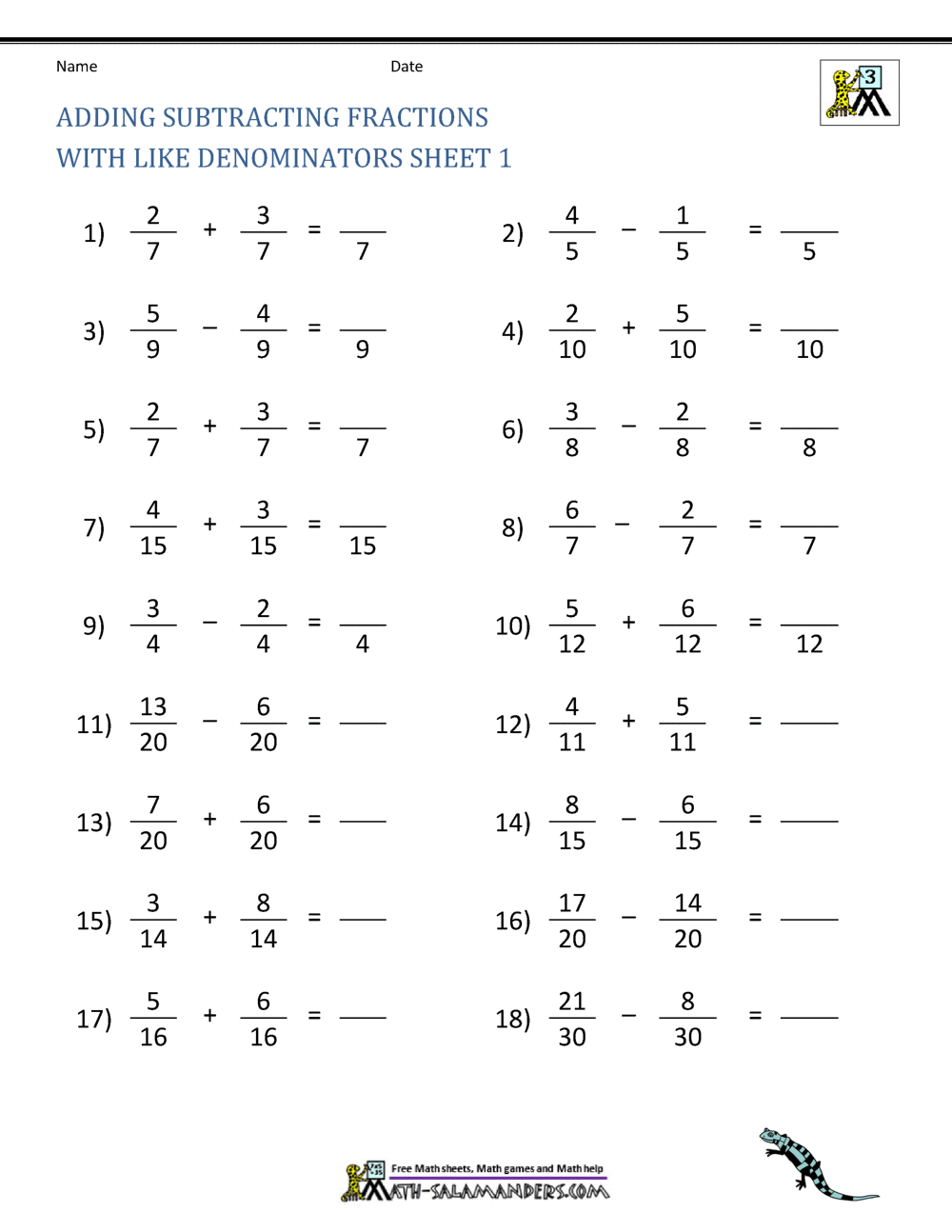
Step 1: The foremost step is to note the unlike fractions properly with the ‘+’ sign. Look at the steps below to understand this method: We can easily add the fractions with the steps mentioned in the above section when we have the same denominator. This is done to make a common denominator for the fractions. At the same time, adding, unlike fractions, you need to find the LCM of the denominators. Remember that LCM or Least Common Multiple is the key to solving the questions related to the addition of unlike fractions. Many students are often confused and make errors while adding, unlike fractions. The procedure of adding unlike fractions involves a lot of tips and tricks, which must be at your fingertips. The addition of fractions with not the same denominator is much tougher than the addition we studied in the above topic. Add Fractions with Different Denominators Let us now learn about how we add fractions having different denominators. We are now well equipped with the knowledge about adding two fractions with the same denominators. Here we cannot further simplify the fractions as 5 and 11 are not common multiples of any other number. Step 4: Finally, we write the resulting fractions as 5/11. Step 3: Now, we add the numerator terms to find the numerator of the result. Step 2: Since we are adding like fractions, the denominator of the outcome will be 11. Step 1: Writing the numerators in proper form for addition, i.e., 2/11 + 3/11 Solution: Carefully following the steps mentioned above, we start the addition: See the example below to understand the above steps.
ADDING FRACTIONS WITH UNLIKE DENOMINATORS HOW TO
Let us first learn how to add fractions with the same denominators to understand the concept of addition of unlike fractions. Thus the fractions given are not like fractions but unlike fractions. But for the fractions to be like, their denominators must be equal, not their numerators. We can see that their numerators are the same, that is 3. They are unlike because their denominators are different 4 and 2. For example, ¾ and ½ are unlike fractions. Add Fractions with different denominators are known as, unlike fractions. We must be clear about what fractions with different denominators are before we learn about their addiction. In this article, we will learn about how to add fractions with different denominators with a lot of examples. This concept is important because the students are often confused between adding like and unlike fractions. This enhances the calculation capacity of the students. It is among the topics which are covered in elementary schools. It sounds hard but adding fractions with different denominators is easy. (This number 12 will be called our common denominator.Add fractions with different denominators is an advanced concept to learn after having sound knowledge about adding two fractions with the same denominator. On the "fourths" line, if we cut each "fourth" into three equal sections we will get 12 in total. On the "thirds" line, if we cut each "third" into four equal sections we will get 12 in total. (Finding the needed number of subdivisions, will create our common denominator.)

The trick is to make more equal subdivisions until we have the same equal number on each line. There must be a way to "fix" the subdivisions (sections) so that they could be the same size. It would be like adding apples and dogs and wondering what you actually had when you were done. Because of this difference in the size of these sections, we have no way of combining (or adding) them together. One of the subdivision is "thirds" and the other is "fourths". When and are plotted on number lines, the subdivisions (sections) on the number lines are different. We are going to be looking at the addition of fractions using number lines.


 0 kommentar(er)
0 kommentar(er)
